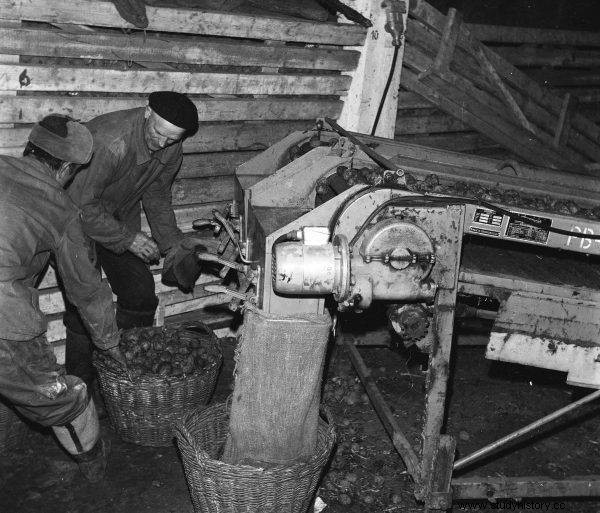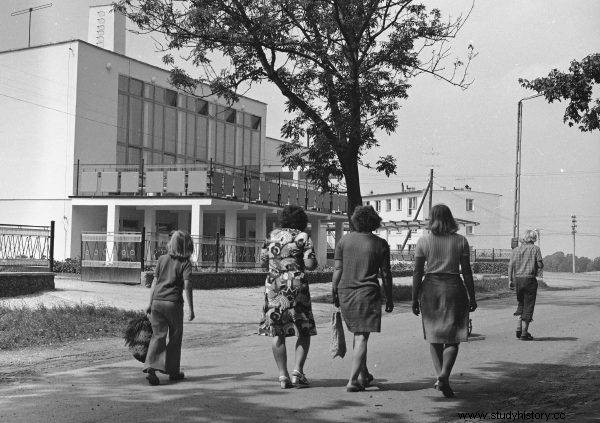Why were State Farms liquidated? Although the ideological issue was not insignificant, the decisive fact was that the state-owned farms had ... considerable wealth. Most of the land of former state farms went to the Catholic Church, the rest was leased to individual farmers. Movable property has been looted.
Contrary to popular belief, the State Agricultural Farms (PGRs) did not collapse or went bankrupt, but were liquidated from above under the Act of October 19, 1991 on the management of agricultural property of the State Treasury.
In 1990, the State Farms employed 395,000 people. people. According to data from the Central Statistical Office of Poland, in 1991, out of 1,520 state-owned agricultural enterprises, 1,152 companies suffered a loss, 3 had a zero result, and 365 companies generated a net profit.
State farms, like the entire agricultural sector have been hit hard by the shock therapy of Balcerowicz, especially the drastic increase in loan interest rates . So there was no economic reason to close down farms - especially all of them. The assets of state-owned farms were taken over by the Agricultural Property Agency of the State Treasury.
From the beginning of the 1990s, successive governments were looking for money that could satisfy the rapidly growing claims of the Catholic Church . The assets of state-owned farms turned out to be a rich base for various "compensations". Thus, most of the state-owned land went to the Church. A smaller part was leased to private persons, contributing to the creation of large-scale farms.
Drunkard, loafer, thief
For all this, the employees of state farms and their families paid a huge price. Overnight half a million people were left without work, in the middle of nowhere, far from urban centers and any work . They were left with nothing. The effects of liquidation of farms have not been dealt with to this day. The work of degradation was completed with the subsequent liquidation of public transport in many rural areas - also from above - through the liquidation of PKSs.
In order to make it easier for the public to explain such an operation, it was decided to dehumanize these people, presenting them as pathology:lazy people, thieves and drunks. They said they weren't owed anything because they'd drink it all anyway. Even their dignity was taken away.

The employees of state farms and their families paid a huge price for all this. Overnight, half a million people were left without work, in the middle of nowhere, far from urban centers and any kind of job.
Public opinion eagerly "bought" such a narrative - suffice it to mention the popularity of the film "Arizona", depicting former state farms as degenerates.
After years of liquidators of state-owned farms, they cannot afford even the slightest reflection. In 2017, Jacek Siwicki, minister in Bielecki's government, told Gazeta Wyborcza: "We forget that there was no such thing as a work ethic in state-owned farms" . What was there? "Hopelessness, theft, drunkenness."
People brought up in state farms took part in unscrewing the black legend a few years ago. Social campaigns were initiated, reports about them were published in the media. In 2018, Joanna Warecha's documentary "PGR Images" premiered. The document shows the fate of people after the liquidation of farms in Warmia and Mazury. The filmmaker also based the script on her own experiences.
PGR - more than a workplace
State-owned farms were established in 1949. The main goal of state-owned farms was to intensify agricultural production, mainly for the needs of cities. Individual agriculture was highly fragmented, and a large part of farms performed more social than commercial functions.

State farms provided not only jobs. They were responsible for meeting the housing needs of employees, they ran kindergartens, sometimes also schools
State-owned farms were established mainly in the western and northern part of the country. In 1980 they managed 18.5% of the total agricultural land in Poland. The farms also employed qualified specialists in the field of agriculture, including to their research centers.
State farms provided not only jobs. They were responsible for meeting the housing needs of employees, running kindergartens, sometimes schools, organizing transport of children to schools, providing additional meals, and running day-rooms, clubs, and fire brigades. They also dealt with, inter alia, the maintenance of local roads or drainage activities.
